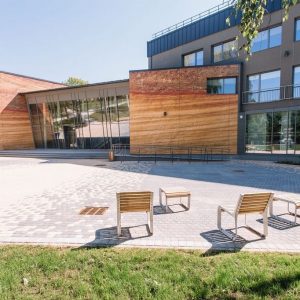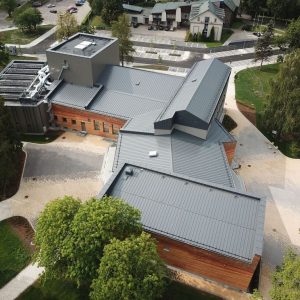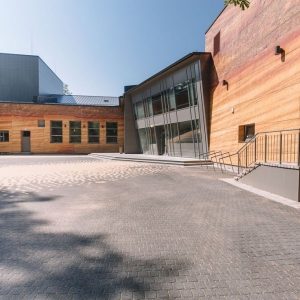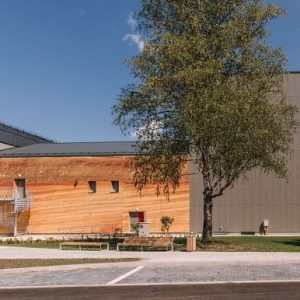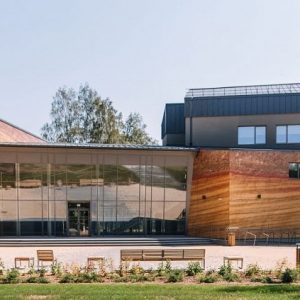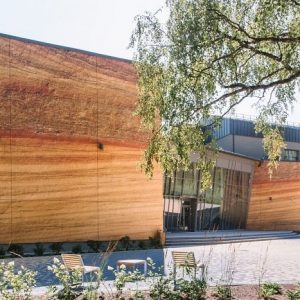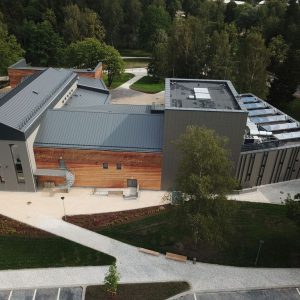Dienas Bizness: Devil’s cliffs can be seen on the facade of Sigulda Region Culture Center 08.08.2018
After the reconstruction, the Sigulda Region Culture Center was put into operation, which was built in 1962 and since then has served without significant repairs. Architect Aldis Polis has used decorative facade panels on the facade of the building, the printing of which is based on photographs of Devonian sandstone outcrops from the Devil’s Cliffs in Sigulda.
The rebuilt cultural center has entrances on both sides of the building, providing access to both the main city streets and the functional parking lot, which is equipped with an electric car medium speed charging device. The building has four specially adapted rehearsal rooms for the needs of orchestra, choir and dancers, which will be available to the amateur arts groups of the county. A movement-absorbing floor has been built in the dance hall.
The rebuilt building has good acoustics with low reverberation time, which is suitable for concerts with sound and will allow high-quality audio recordings or live broadcasts of cultural events. This is the first building in the Baltic States to have a Meyer Sound sound system installed. Also, all halls are equipped with high-definition video projectors, but the large hall is specially adapted for events that require complex decorations – the stage is in-depth, equipped with lifting structures and professional stage lights. The volume of the cultural center has been increased with a technical building.
The former cinema hall has also been renovated with high-quality technological solutions, where smaller-form concerts, performances or cinema screenings can take place, while the exhibition hall can host various exhibitions or small chamber events. A new grand piano will be purchased for the cultural center soon. In terms of energy efficiency, the building is equipped with a building management system that automatically regulates and controls ventilation, heating, lighting and air conditioning equipment. Using this technology, it is possible to regulate the most important energy consumers – cold stations, heating units, ventilation units – according to demand, significantly increasing the level of energy efficiency of the building.
The original article can be read here.


